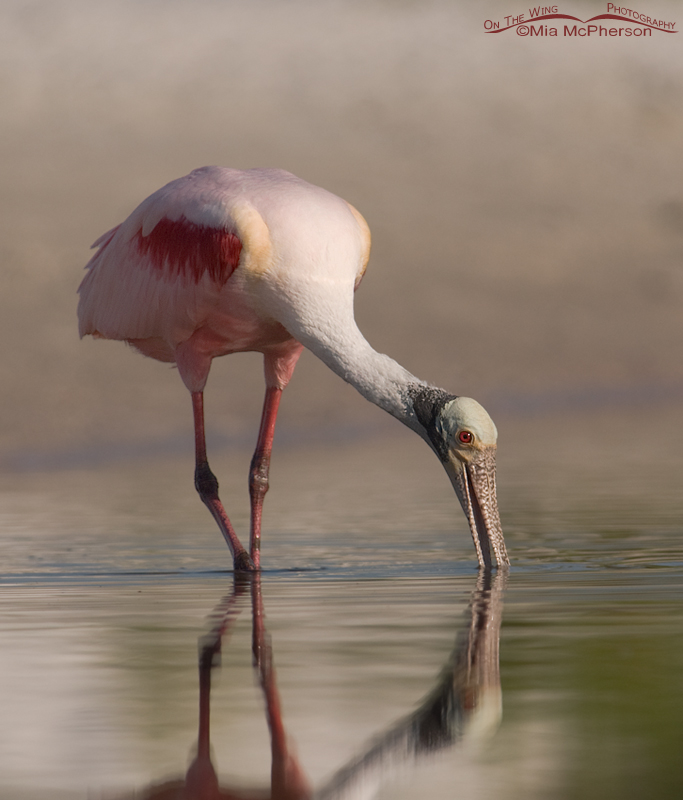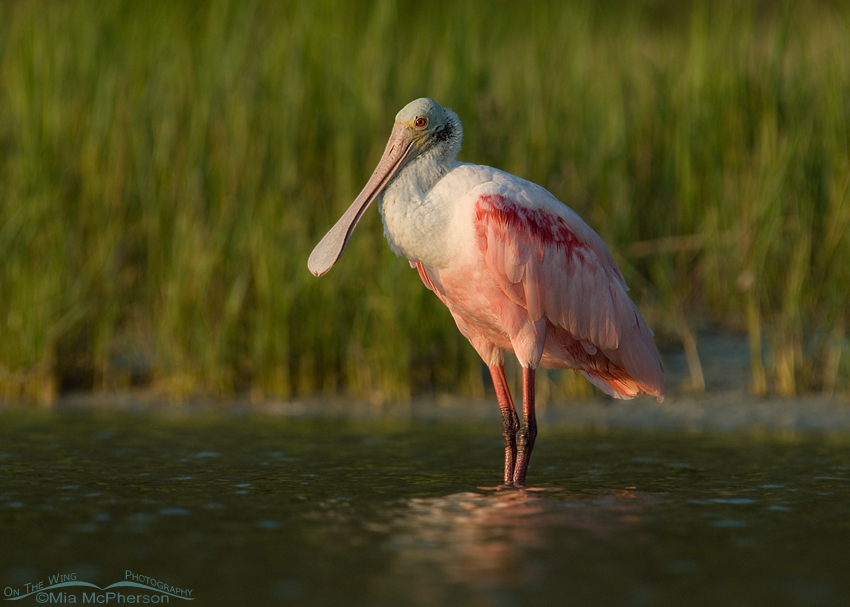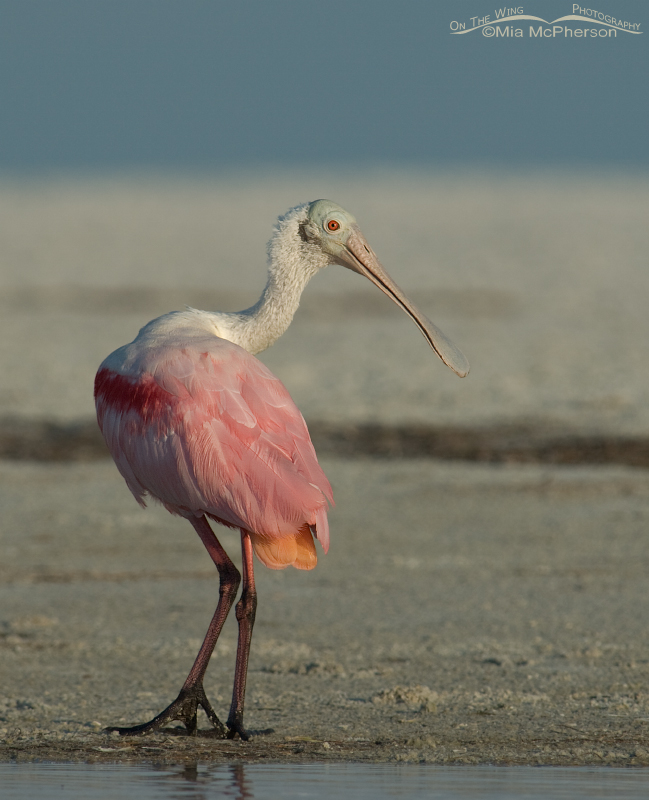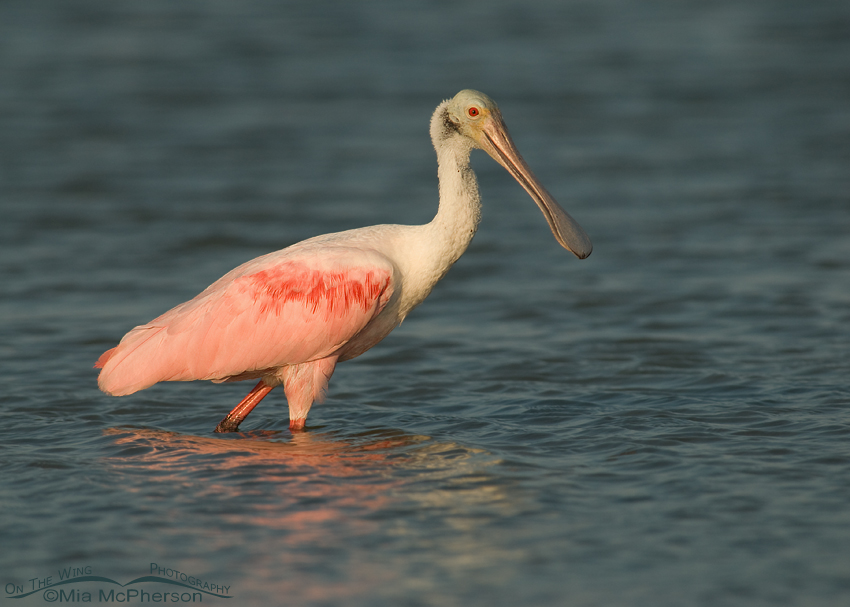
Cotton candy pink… are the descriptive words I thought of when I saw my first Roseate Spoonbill. Of the world’s six species of Spoonbills the only ones that are pink are are the roseate spoonbills and it also the only spoonbill native to North America.
Spoonbills were named for their bills which at the tip are spoon-shaped. I’ll post some immature roseate spoonbills another time and just focus on the adults now. The bird above is in breeding plumage, the head turns a pale greenish color and just below that there will be an almost black area on the neck, the bill will show some dark speckling and the yellows near the tail will be more pronounced, it also seems to me that the carmine red on the wings becomes redder.

Roseate Spoonbills can be found in saltwater tidal lagoons and in freshwater areas such as marshes, swamps and lakes. They feed on small fish, shrimp and crabs in the water by swinging their bills side to side in a sweeping motion to locate their prey. They fly slowly which can help when taking images in flight.
Some nicknames for the roseate spoonbill are Flame Bird, Banjo-bill, Pink Curlew, Pink and Pinkie but the one I would hear most often is Spoonie.

Because of their unique coloration and bill shape spoonbills stand out from the other wading birds and are easily recognizable. The spoonbill above is an adult in nonbreeding plumage. I find that photographing them is best in early morning or late afternoon light as the whites of the neck and belly are easily blown out.
On photo critiques sites spoonbills are often presented with too much saturation applied in post processing. I much prefer to keep the saturation of spoonbills or any other species on a more natural and realistic level. Spoonies are colorful enough naturally. None of my spoonbill images posted here have had any increase of saturation applied in post processing.

I always think of “Cotton Candy Pink” when I photograph this species or look at my images of them. They may be odd looking birds to some because of the bald head and strange shaped bill but I find all species of birds to have their own beauty and will photograph any bird that I see through my viewfinder.
Mia


What great photos! I’d love to see this bird someday! One of the most dinosaur-looking birds there is…